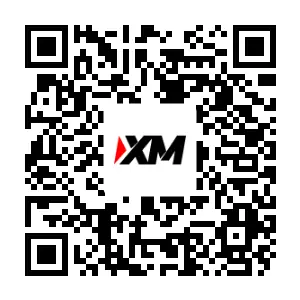Six Various Types of Charts
What are the Different Chart Types?
There are various types of charts utilized in trading analysis, which are detailed below.
One can use this chart types tutorial to find out which trading chart types are the best for them to use when analyzing the market price movement:
Line Charts
Line charts connect closing prices with a simple line across time periods.
The line chart view for Gold displays price information as a continuous stroke linking a sequence of closing prices.
The gold line chart will not draw other price information like the high of the price, the low of the price & closing of the price.
Traders can also use gold line charts to identify & trade analysis patterns like double top and double bottom.
Traders also possess the ability to employ the gold line feature for trend identification and for drawing trendlines directly onto these gold line charts.
Bar Charts
Gold bar charts will show the price action data of a particular time-frame period.
The gold bar chart will show high price, low price, open price and close price.
The bar chart is depicted with a vertical line representing the bar, accompanied by a small mark on the left side of this line indicating the opening price, and another mark on the right side illustrating the closing price.
A gold bar will continue and start plotting from where the previous bar left of.
Traders can also use gold bar charts to identify & trade analysis patterns.
Traders also possess the option to use gold bar charts as a means to spot trends and construct trendlines upon these graphical representations.
Candles Charts
Candlesticks charts are used to represent all the information of the price action movement that includes: high price, low price, open price and close price.
A Gold price candle consists of two primary components: the central body section and the projections extending from it, known as shadows.
The candle body shows action from open to close. Colors change with price direction. Green or blue means up: red means down.
The length of the body of the candlesticks will determine how much price movement there was between the opening price and closing price for a given time-frame period.
Thin lines above and below the candlestick body are shadows. They mark the high and low prices for that period.
Traders Gain Insights from Candle Body and Shadows in Deals.
Pick the Fibonacci Expansion Indicator from the pop-up. Click Insert, then Close. See the details below.
These candles patterns include:
- Doji Candle
- Marubozu Candlestick
- Hammer Candle
- Inverted hammer Candle
- Shooting Star Candle
- Piercing Line Candle
- Dark Cloud Candle
- Morning Star Candle
- Evening Star Candle
- Bullish Engulfing Candles
- Bearish Engulfing Candles
Heiken Ashi Charts
Heikin-Ashi is Japanese & means average bar.
Heikin Ashi charts are used because it's easier to identify trends using Heiken Ashi Charts
Heikin-Ashi charts bear a resemblance to standard candlesticks but employ a distinct calculation methodology.
Heiken Ashi candle-stick price points are calculated as follows:
Opening Price - The opening price is figured out by averaging the opening and closing prices of the previous candle.
The high price of a Heiken Ashi candlestick is determined using the highest value among three data points from the previous candle: the high, the opening price, or the closing price.
Low price in a Heikin Ashi candle picks from the prior candle's low, open, or close. It chooses the lowest value among them.
The closing price is determined by averaging the opening, high, low, and closing prices of the previous candlestick.
Heikin Ashi charts send signals a bit slower than regular candlestick charts. That's because of the way they're calculated and plotted.
Heikin Ashi charts give slower signals. They suit volatile prices well. The delay helps skip false gold signals from whipsaws.
Heikin Ashi charts have less gold whip saw signals because of the delay in calculation of prices.
Renko Charts
Renko charts display a square block on the graph when the price shifts by a specified distance.
Renko charts are also used to filter out the time when the market is consolidating
When market price moves by this distance the Renko chart adds another square block.
The square block will be added in the direction of the price move.
Renko charts are used to identify the trends & trade these trends.
Point and Figure Charts
Point and figure charts skip time during market flats.
Point & Figure charts are drawn with X & 0 columns that are vertical.
Point & figure charts are used to make time shorter using the point and figure chart representations because point & figure adds a new X or 0 in a line above or below rather than next to the previous point & figure & only when the point and figure determines the trend to have changed then a new line is then added to the right side of the point and figure charts.
Point & Figure charts are used to identify the trends & trade these trends.
The 6 Different Types of Charts Used in Gold Trading
Get More Courses:
- Looking for a MetaTrader 4 shortcut keys tutorial? I can help.
- USDSGD Bid Ask Spread Explained
- Identifying Buy and Sell Signals Using the Average True Range Indicator
- Understanding Contracts for Difference (CFDs) and How to Trade Them
- Learn Trade FX Beginner Trader Course Tutorial Lessons
- EURO STOXX50 Trading System Guide Unveiled
- Gold (XAU/USD) Educational Course for New Account Holders
- HSI 50 Index Trading Methods: Build Your Own Strategies
- Generating Forex Signals Using MACD Analysis

